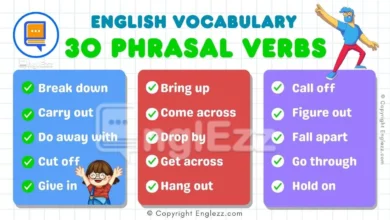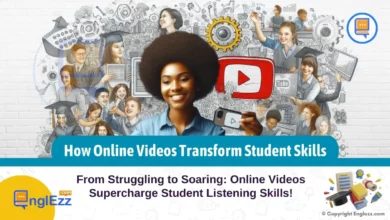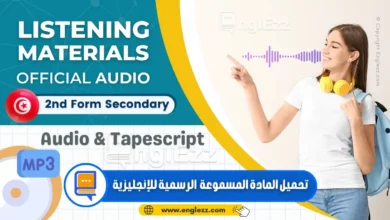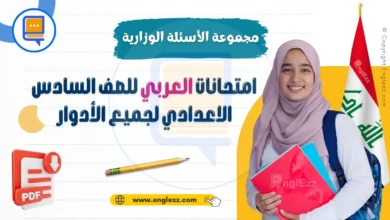In the realm of language teaching, the reverberations of rote memorization have long been felt – a method ingrained in historical pedagogy yet laden with limitations that impede authentic language acquisition. The repetitive chanting of vocabulary lists or rigid grammar drills, though once heralded as pillars of language education, now stand scrutinized under the lens of critical inquiry. This article embarks on a journey beyond these confines, where the echoes of recitation metamorphose into nuanced contemplation and deliberate interrogation.
By unshackling ourselves from the constraints of rote learning, we delve into a transformative approach: one that beckons towards thoughtful reflection as a cornerstone in revolutionizing how languages are taught and learned.
Table of Contents
- From Rote Memorization to Thoughtful Reflection: Revolutionizing Language Teaching
- The Evolution of Language Teaching Methods
- Encouraging Critical Thinking in Language Learning
- Benefits for Teachers and Learners
- Overcoming Challenges in Implementing Reflective Teaching
- Case Studies: Successful Implementation Stories
- Embracing a Transformative Pedagogy
- A Call to Action towards Thoughtful Reflection
- Conclusion:
- FAQs:
- Q: How can educators incorporate critical thinking into language lessons?
- Q: What are some benefits for teachers when transitioning from rote memorization to reflective teaching?
- Q: What obstacles might teachers face while implementing reflective teaching approaches?
- Q: How can technology support critical thinking skills in language learning contexts?
- Q: What role does interdisciplinary collaboration play in enriching language instruction?
From Rote Memorization to Thoughtful Reflection: Revolutionizing Language Teaching
Amidst this paradigm shift lies an invitation to transcend mere reproduction skills – a call to nurture intellectual engagement through linguistic exploration and cognitive depth within language instruction. Echoing throughout educational corridors is the resounding assertion that memorization alone cannot serve as the bedrock for true language proficiency.
As educators, linguists, academics, and enthusiasts alike converge on this discourse, a collective gaze turns towards redefining conventional methodologies to pave avenues for heightened cognitive involvement and comprehensive understanding.
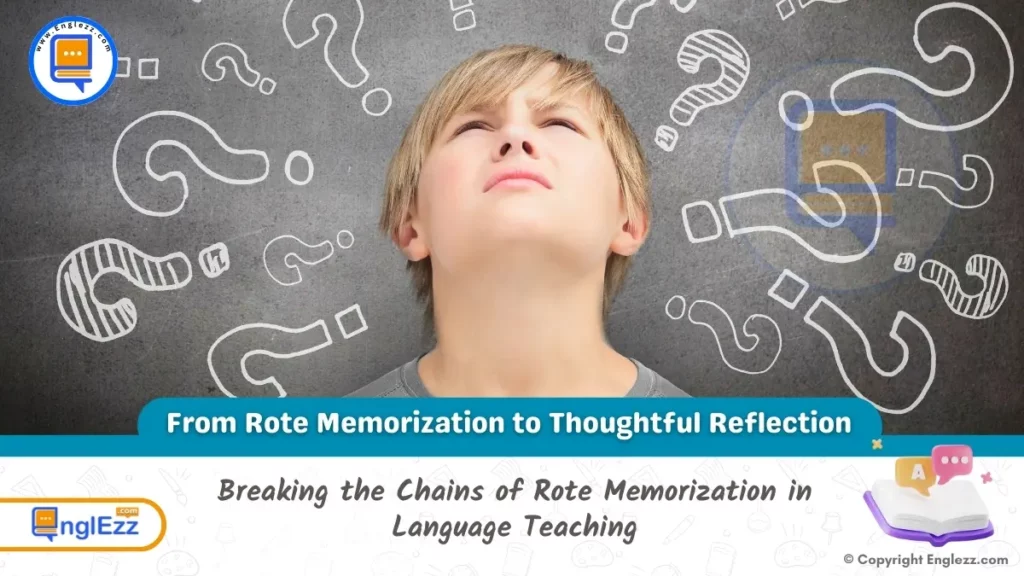
Departing from archaic traditions that reduce languages to mechanical equations awaiting prompt solutions, we embark on an odyssey towards fostering reflective practices that foster analytical acumen and critical acuity in every lexicon-imbued endeavor. Join us in unraveling the enigma of transitioning from rote memorization to the luminous realm of thoughtful reflection – wherein lies the cradle for a renaissance in language teaching paradigms.
The Evolution of Language Teaching Methods
Exploring the historical foundation of rote memorization in language education unveils a tradition deeply entrenched in repetition and memorization as primary tools for language acquisition. Rooted in behaviorist theories, methods like grammar-translation and audio-lingual approaches emphasized rote learning to internalize vocabulary and grammatical rules through mechanical practice. However, as educational theories evolved towards constructivism and cognitive psychology, there emerged a growing realization that language learning is not simply about regurgitating information but rather constructing meaning actively through engagement. This shift sparked pedagogical trends moving away from the passive absorption of knowledge towards active participation, reflection, and critical thinking.
Incorporating authentic materials such as newspapers, podcasts, and films can provide students with real-world language contexts that encourage critical thinking and application of learned concepts. For instance, analyzing a news article or listening to a podcast in the target language can prompt students to reflect on cultural nuances, linguistic structures, and varying perspectives.
The changing perspectives in language teaching underscore the necessity of adapting methodologies to align with modern educational needs. In today’s interconnected world where communication skills are paramount, educators prioritize equipping students with practical language proficiency alongside critical thinking abilities. Innovative approaches such as communicative language teaching (CLT) emphasize authentic interactions, problem-solving tasks, and real-world application of linguistic skills over repetitive drill exercises. By recognizing the dynamic nature of languages and the diverse contexts in which they function, educators are embracing student-centered techniques that foster autonomy, creativity, and deeper understanding beyond mere memorization.
As we navigate an era defined by rapid technological advancements and evolving sociocultural landscapes, the importance of updating teaching methods becomes increasingly evident. Modern learners require more than just rote memorization; they seek meaningful engagement with concepts that encourage them to think critically and analytically. By adapting language teaching practices to reflect these shifting paradigms – fostering creativity, collaboration, and adaptability – educators can empower students to become proficient communicators capable of navigating an ever-changing global society with confidence and fluency.
Encouraging Critical Thinking in Language Learning
Fostering critical thinking skills is key to enhancing language acquisition by moving learners beyond the mere repetition of phrases toward a deeper understanding of linguistic structures and functions. By engaging students in activities that require them to analyze, evaluate, and synthesize information, educators can cultivate a more profound connection to the language being studied. Encouraging critical thinking in language learning not only helps students comprehend grammar rules and vocabulary but also empowers them to apply their knowledge creatively in various contexts.
Incorporating critical thinking activities into language lessons effectively involves structuring tasks that challenge students to question assumptions, draw conclusions based on evidence, and articulate their reasoning coherently.
- For instance, engaging students in debates where they must construct arguments or analyze texts for underlying themes pushes them to think critically about the nuances of language and communication.
By structuring class discussions around open-ended questions that prompt students to reflect on cultural connotations or rhetorical strategies within a given text, educators can foster a culture of inquiry and intellectual curiosity among learners.
To illustrate, one effective exercise could involve asking students to dissect idiomatic expressions unique to a target language and explain their figurative meanings using real-life examples. This task not only requires linguistic analysis but also encourages students to appreciate cultural nuances embedded within language use. Another example could entail presenting students with authentic materials like news articles or advertisements and guiding them through a process of identifying persuasive techniques employed by writers – thus equipping learners with the ability to decode subtle messaging and rhetoric in real-world contexts. Ultimately, integrating such thought-provoking exercises into language teaching facilitates a holistic approach that nurtures analytical skills alongside linguistic proficiency.
Benefits for Teachers and Learners
Transitioning from traditional rote memorization methods to reflective teaching approaches presents a host of advantages for both educators and learners in the language classroom. For teachers, this shift allows for a deeper level of engagement with students as they move beyond the confines of reciting information to facilitating meaningful discussions and critical thinking exercises. By shifting the focus from passive absorption of facts to active reflection, educators can foster a more profound connection with their students, leading to increased job satisfaction and professional fulfillment.
Moreover, embracing thoughtful reflection techniques in language instruction can significantly enhance student engagement, motivation, and comprehension. When learners are encouraged to think critically about language concepts, analyze cultural nuances, and apply their knowledge creatively, they become more invested in the learning process. This heightened level of engagement not only results in improved retention of material but also cultivates a sense of ownership over their linguistic development. Through activities that prompt deep reflection on vocabulary usage or grammatical structures within authentic contexts, students are better equipped to internalize language skills effectively.
Furthermore, by transitioning towards a reflective teaching approach, educators have the opportunity to create a dynamic and interactive learning environment that fosters collaboration and active participation. Rather than passively receiving information through repetitive drills, students are encouraged to explore language concepts through discussion forums, project-based assignments, or real-world applications.
This shift not only empowers learners to take charge of their own learning but also nurtures a community of inquiry where diverse perspectives are valued and shared. As teachers design lessons that stimulate curiosity and spark intellectual discourse, classrooms become vibrant spaces where knowledge is co-constructed through dialogue and shared exploration.
Overcoming Challenges in Implementing Reflective Teaching
Transitioning from rote memorization to reflective teaching approaches in language instruction presents a range of challenges for educators. One common obstacle is ingrained institutional norms that prioritize traditional teaching methods, making it difficult for teachers to deviate from established practices. Resistance from students accustomed to passive learning can also pose a hurdle, as they may initially struggle with the shift towards more active engagement and critical thinking. Additionally, time constraints within curricula and pressure to cover vast amounts of content often impede the integration of reflective teaching strategies.
Implementing collaborative learning strategies like group discussions, debates, or peer feedback sessions fosters a dynamic learning environment where students engage actively with the language and each other. By working together on projects or tasks, learners can enhance their communication skills while reflecting on diverse viewpoints and problem-solving approaches.
To address these challenges, it is crucial for teachers to adopt a gradual approach towards implementing reflective teaching practices. Providing clear explanations about the benefits of critical thinking in language learning can help cultivate buy-in from both students and administrators. Offering professional development opportunities focused on pedagogical techniques that foster reflection can empower educators with the skills necessary to navigate this instructional transformation. Furthermore, establishing supportive communities within schools or online platforms where teachers can share experiences, resources, and best practices can create a network of encouragement and collaboration.
Emphasizing ongoing support mechanisms for teachers navigating this transition is paramount. Mentorship programs pairing experienced reflective instructors with those new to the methodology can offer guidance and practical advice tailored to individual contexts. Regular feedback loops and opportunities for reflection on teaching practices enable continuous improvement and adjustment based on student outcomes. By fostering a culture of innovation and adaptability within educational settings, language teachers can overcome challenges inherent in transitioning from rote memorization to thoughtful reflection, ultimately enriching the learning experience for both educators and learners alike.
Case Studies: Successful Implementation Stories
In a notable case study conducted at a language institute in Finland, educators embraced a more reflective teaching approach by incorporating critical thinking tasks into their curriculum. By integrating activities that encouraged students to analyze linguistic structures and cultural nuances rather than solely memorizing vocabulary lists, the instructors witnessed a significant improvement in student engagement and language proficiency levels.
The success of this transition was attributed to the collaborative effort between teachers who supported each other in designing thought-provoking assignments tailored to enhance critical thinking skills. Moreover, feedback mechanisms were put in place to continuously assess the effectiveness of these new methodologies, allowing for ongoing refinement based on student performance.
Encouraging students to maintain reflective journals where they can record their thoughts, challenges, and breakthroughs in language learning promotes self-awareness and metacognition. Reflective journaling allows learners to track their progress, set goals for improvement, and develop a deeper understanding of their learning processes through introspection.
Similarly, an international school in Singapore shifted from traditional grammar-based instruction to a reflective teaching model focusing on communicative competence and intercultural awareness. Through interactive group discussions, project-based learning tasks, and language immersion experiences, students were not only able to grasp linguistic concepts but also cultivate a deeper appreciation for cross-cultural communication.
Educators noted enhanced creativity and cognitive flexibility among learners exposed to these pedagogical changes. The success of this implementation stemmed from continuous professional development opportunities for teachers to acquire the necessary skills and knowledge needed to effectively facilitate reflective language learning environments.
Analyzing such case studies underscores the transformative power of shifting from rote memorization to thoughtful reflection in language teaching.
- Key takeaways include the importance of fostering teacher collaboration,
- providing targeted support through training programs,
- and consistently evaluating instructional strategies based on empirical evidence.
By highlighting these successful implementations and sharing educators’ insights on the benefits observed post-transition, it becomes evident that embracing reflective teaching practices is not just a theoretical shift but a practical necessity in enhancing language acquisition outcomes across diverse educational settings.
The future of language education is rapidly evolving, embracing innovative trends and technologies to enhance learning outcomes globally. Emerging approaches are reshaping traditional language teaching methods, emphasizing the importance of critical thinking skills in linguistic acquisition. With the integration of technology-enhanced tools and digital platforms, educators can provide students with interactive experiences that stimulate thoughtful reflection and deeper engagement with language concepts. From gamified language learning apps to virtual reality simulations, these advancements cater to diverse learning styles and foster a dynamic educational environment conducive to intellectual growth.
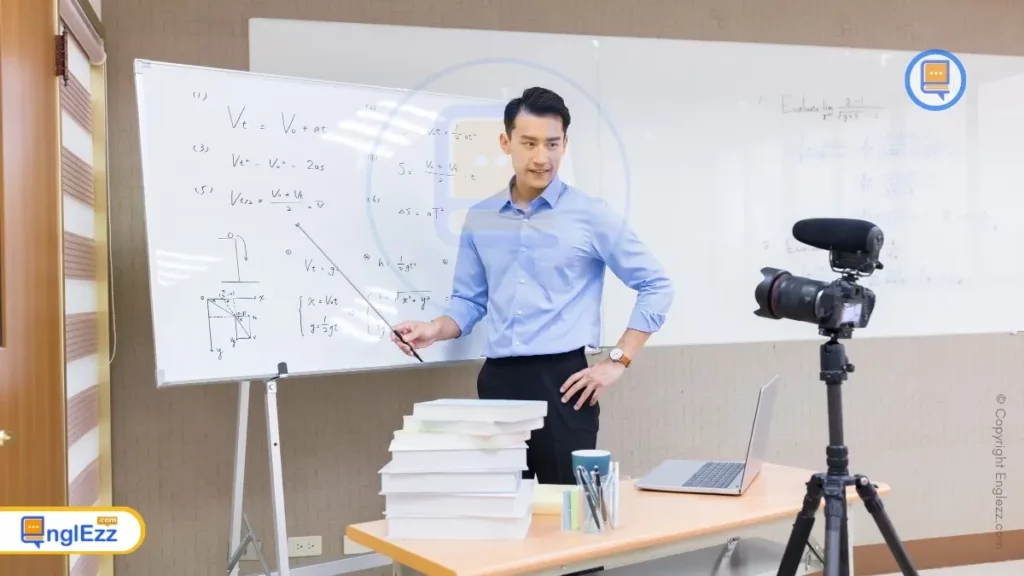
In this era of interdisciplinary collaboration, language instruction stands to benefit significantly from partnerships across various fields such as cognitive psychology, artificial intelligence, and data analytics. By harnessing insights from these disciplines, educators can tailor instructional strategies to meet individual student needs more effectively. Moreover, research advancements in areas like neuroeducation offer valuable insights into how the brain processes language and learning mechanisms, paving the way for evidence-based pedagogical practices that optimize educational experiences.
This interdisciplinary approach not only enriches language instruction but also contributes to a holistic understanding of how students acquire and internalize linguistic knowledge.
Looking ahead, the possibilities for enriching language education seem boundless as educators continue to explore new methodologies and tools that promote critical thinking, creativity, and cultural awareness. The integration of augmented reality for immersive language experiences, personalized learning algorithms for adaptive lessons, or even AI-powered chatbots for real-time practice sessions exemplify the direction in which language education is heading.
By staying attuned to these trends and innovations while maintaining a commitment to reflective teaching practices, educators can nurture a generation of linguistically adept individuals poised to thrive in multilingual societies interconnected by global communication networks.
Embracing a Transformative Pedagogy
In concluding our exploration of the evolution of language teaching methodologies, it becomes evident that the paradigm shift from rote memorization to thoughtful reflection holds the key to revolutionizing language education. Reflective teaching not only facilitates deeper comprehension and retention but also nurtures critical thinking skills essential for navigating diverse linguistic contexts.
By anchoring instruction in reflective practices, educators can cultivate a learning environment that transcends mere regurgitation of information to one that encourages analytical thinking and problem-solving. This pedagogical transformation empowers learners to engage more meaningfully with the intricacies of language, fostering a holistic understanding that extends beyond surface-level proficiency.
A Call to Action towards Thoughtful Reflection
By diving into historical perspectives, acknowledging evolving pedagogical trends, and emphasizing the vitality of critical thinking skills, educators can pave the way for a more engaging and intellectually stimulating learning environment. The benefits derived from this shift extend beyond mere language proficiency; they encompass heightened student engagement, boosted motivation, and an enriched understanding of linguistic concepts.
As educators and linguists continue to navigate the realms of reflective teaching practices, it becomes imperative to acknowledge the intricacies involved in implementing such methodologies effectively. Overcoming challenges necessitates perseverance, ongoing professional development, and a commitment to exploring innovative strategies that align with modern educational needs. By embracing this transformative pedagogy that liberates learners from the shackles of rote memorization, language instructors are poised to shape a future where intellectual curiosity thrives within language classrooms.
Conclusion:
As we bid farewell to traditional rote-based approaches, the benefits of embracing reflective pedagogy for both educators and learners come sharply into focus. Educators find renewed satisfaction in their craft as they witness heightened student engagement, curiosity, and independence in learning. Students, on the other hand, experience a shift towards intrinsic motivation fueled by their active participation in constructing knowledge through reflection. Through this synergy between teachers and learners, a dynamic partnership emerges where intellectual growth is mutual and continual.
Looking ahead, it is imperative to continue exploring and refining pedagogical practices that prioritize intellectual engagement and authentic learning experiences in language education. By perpetuating a culture of inquiry and innovation within educational spheres, instructors can adapt to emerging trends and technologies effectively while maintaining the core values of reflective teaching.
Through collaborative efforts grounded in research-driven methodologies, the future of language education promises exciting opportunities for cultivating global citizens equipped with linguistic competence and critical acumen necessary for success in an interconnected world.
FAQs:
Q: How can educators incorporate critical thinking into language lessons?
A: Educators can integrate critical thinking activities by designing exercises that prompt students to analyze linguistic structures or engage in discussions that require them to evaluate different perspectives.
Q: What are some benefits for teachers when transitioning from rote memorization to reflective teaching?
A: Teachers may experience increased job satisfaction, enhanced professional growth opportunities, and a deeper connection with students through more interactive and stimulating instructional methods.
Q: What obstacles might teachers face while implementing reflective teaching approaches?
A: Common challenges include resistance from students accustomed to traditional methods, time constraints in lesson planning for reflective activities, and the need for additional training on incorporating critical thinking strategies effectively.
Q: How can technology support critical thinking skills in language learning contexts?
A: Technology tools like online discussion forums, multimedia resources for analysis, or digital platforms offering collaborative spaces can provide avenues for fostering critical thought among language learners.
Q: What role does interdisciplinary collaboration play in enriching language instruction?
A: Interdisciplinary collaboration allows for the integration of diverse perspectives and expertise into language teaching practices, enabling a holistic approach that enhances students‘ overall learning experiences.
By following these tips and embracing reflective teaching practices grounded in critical thinking principles, educators can elevate language instruction beyond mere memorization towards meaningful engagement and enriched learning experiences for both teachers and learners alike.


